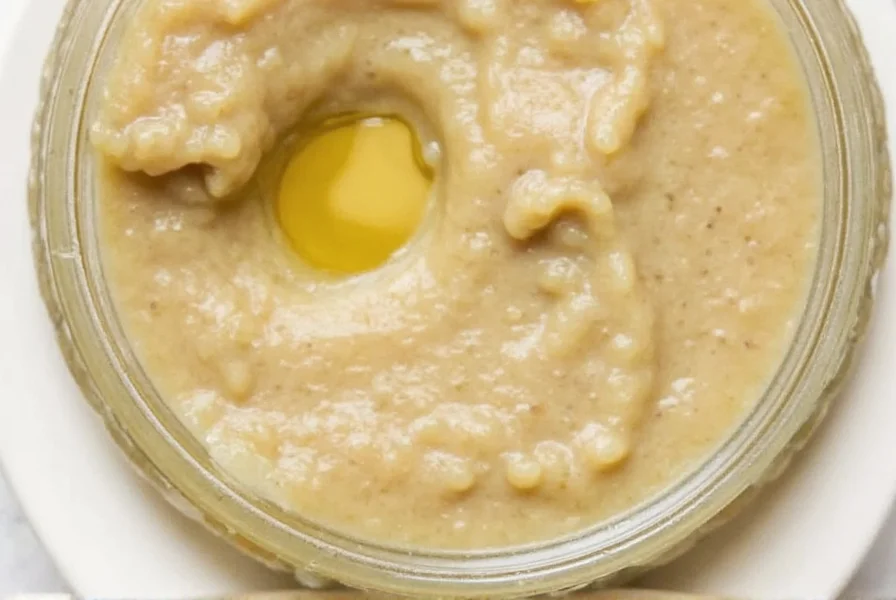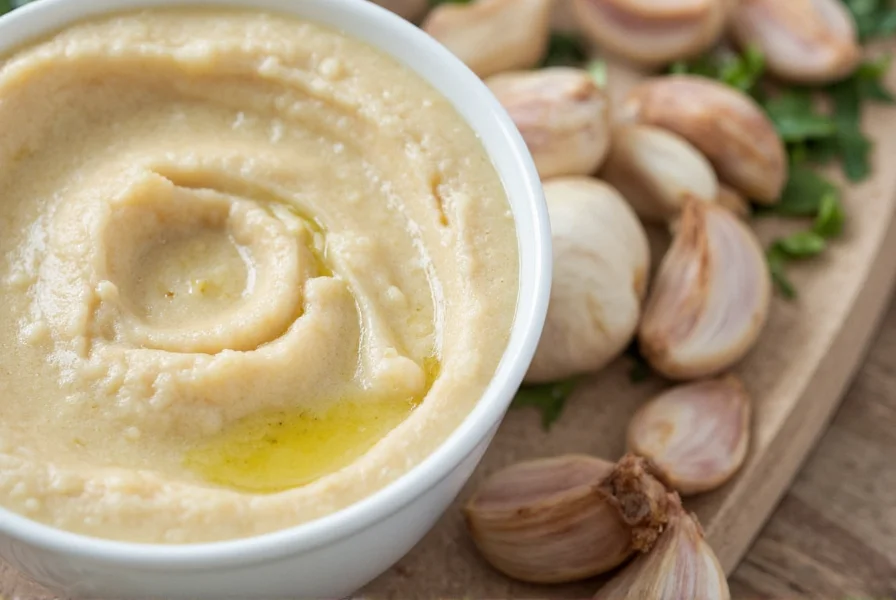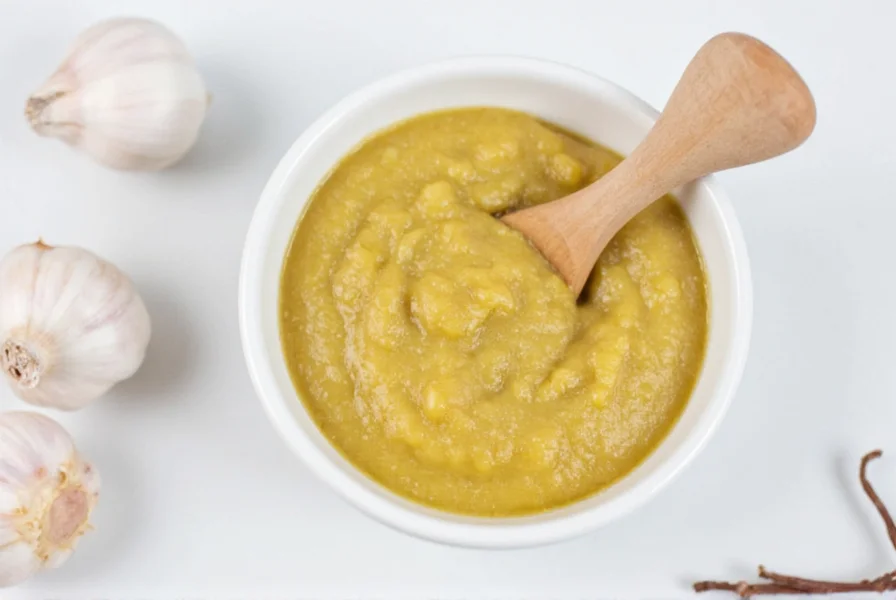Creating your own garlic and ginger paste solves the common kitchen problem of fresh ingredients spoiling before full usage. Unlike pre-packaged alternatives, homemade versions contain no preservatives and provide superior flavor intensity. This guide details the optimal preparation method, storage techniques, and culinary applications to maximize your cooking efficiency.
Why Garlic and Ginger Paste Belongs in Your Kitchen
The combination of garlic and ginger creates a flavor foundation used across global cuisines, particularly in Indian, Chinese, and Southeast Asian cooking. When prepared as a paste, these ingredients offer distinct advantages over using them separately:
- Consistent flavor distribution - Eliminates uneven chunks in sauces and marinades
- Time efficiency - Reduces prep time for frequent cooks by 5-7 minutes per meal
- Enhanced shelf life - Properly stored paste lasts 3-4 weeks versus days for fresh ingredients
- Optimal flavor extraction - Blending releases more aromatic compounds than mincing
Research shows that crushing garlic activates allicin, its primary bioactive compound, while ginger's gingerol becomes more bioavailable when processed. The paste format maximizes these health-promoting properties compared to whole forms.

Perfect Homemade Garlic Ginger Paste Recipe
Follow this professional chef-tested method for the best results. This addresses the common question of how to make garlic ginger paste at home with optimal flavor and shelf life.
Ingredients and Equipment
- 1 cup fresh ginger root (peeled)
- 1 cup fresh garlic cloves (peeled)
- 2-3 tablespoons neutral oil (grapeseed or avocado)
- 1 teaspoon citric acid or lemon juice (optional, for extended freshness)
- Food processor or high-speed blender
- Airtight glass containers
Step-by-Step Preparation
- Preparation: Peel 1 cup of ginger root and 1 cup of garlic cloves. For the garlic ginger paste ratio for Indian cooking, maintain equal parts by volume.
- Processing: Cut into 1-inch pieces. Blend with 1 tablespoon oil until smooth, scraping sides frequently. Add remaining oil gradually until reaching a spreadable consistency.
- Adjustment: For Thai or Vietnamese cuisine, increase ginger ratio to 2:1. For stronger garlic flavor in Mediterranean dishes, use a 2:1 garlic ratio.
- Packaging: Transfer to sterilized glass jars, leaving ½ inch headspace. Top with thin oil layer to prevent oxidation.
| Storage Method | Refrigerator Duration | Freezer Duration | Quality Notes |
|---|---|---|---|
| Airtight glass container with oil layer | 3-4 weeks | 6 months | Best flavor retention |
| Ice cube trays + freezer bag | Not recommended | 4 months | Convenient portioning |
| Plastic container | 2-3 weeks | 3 months | May absorb container odors |
Maximizing Shelf Life: Storage Guidelines
Understanding how long does garlic ginger paste last in fridge depends on proper storage techniques. Follow these evidence-based methods:
- Refrigeration: Store in airtight glass containers with oil layer on top. Lasts 3-4 weeks when kept below 40°F (4°C)
- Freezing: Portion into ice cube trays, freeze solid, then transfer to labeled freezer bags. Use within 6 months for best quality
- Preservation boost: Add 1 teaspoon citric acid per cup to extend refrigerator life by 7-10 days
- Contamination prevention: Always use clean utensils when removing paste to prevent bacterial growth
Discard if you notice any of these spoilage signs: sour smell, mold growth, color change to grayish hue, or separation that doesn't reincorporate when stirred.
Culinary Applications and Usage Tips
Mastering uses for garlic ginger paste in cooking transforms your meal preparation. Professional chefs recommend these techniques:
- Marinades: Use 2 tablespoons per pound of protein. The paste penetrates deeper than fresh ingredients, tenderizing while adding flavor
- Curry bases: Sauté 3-4 tablespoons in oil before adding liquids for authentic Indian or Thai curries
- Stir-fries: Add 1-2 tablespoons when heating oil to infuse entire dish with flavor foundation
- Soup enhancement: Stir in 1 tablespoon during final simmer to boost umami without overpowering
For the best way to store garlic ginger paste when freezing, consider these professional tricks: freeze in tablespoon portions for easy recipe scaling, or create flavor variations by adding turmeric, green chilies, or cumin seeds before freezing.

Homemade vs Store-Bought: Making the Right Choice
When considering homemade garlic ginger paste vs store bought, several factors determine the best option:
- Flavor quality: Homemade provides brighter, more complex flavor without preservatives
- Cost analysis: Homemade costs approximately $0.15 per ounce versus $0.35-$0.50 for commercial versions
- Ingredient control: You determine freshness and avoid additives like sodium benzoate
- Convenience factor: Store-bought wins for immediate use, but homemade saves time over multiple meals
For specialty applications like garlic ginger paste for marinades, homemade versions consistently outperform commercial alternatives in flavor depth and protein tenderizing capability.
Frequently Asked Questions
Can I make garlic ginger paste without oil?
Yes, you can make oil-free garlic ginger paste by using 1-2 tablespoons of water or lemon juice during blending. However, oil-free versions last only 7-10 days in the refrigerator versus 3-4 weeks with oil. The oil creates a protective barrier against oxidation and bacterial growth.
What's the ideal garlic to ginger ratio for different cuisines?
For Indian cooking, use a 1:1 ratio. Thai and Vietnamese cuisines typically prefer a 1:2 ginger to garlic ratio for more pronounced ginger flavor. Chinese stir-fries work best with a 2:1 garlic to ginger ratio. Mediterranean dishes often use a 3:1 garlic dominant blend.
How do I prevent my garlic ginger paste from turning brown?
Browning occurs due to oxidation. Prevent this by always covering the paste surface with a thin layer of oil, using airtight containers, and adding 1 teaspoon of citric acid or lemon juice per cup of paste. Store at consistent refrigerator temperatures below 40°F (4°C) and avoid introducing moisture when scooping.
Can I use frozen garlic and ginger to make the paste?
While possible, frozen garlic and ginger produce inferior paste with compromised texture and flavor. Thawed ingredients release excess water, creating a watery paste that doesn't emulsify properly. For best results in your easy garlic ginger paste recipe without oil, always use fresh, firm ingredients at room temperature.
How much paste equals one clove of garlic or inch of ginger?
One teaspoon of garlic ginger paste equals approximately one medium garlic clove or ½ inch of fresh ginger. When substituting in recipes calling for fresh ingredients, use a 3:1 ratio (3 teaspoons paste = 1 tablespoon fresh minced). Remember that paste delivers more concentrated flavor than freshly minced ingredients.











 浙公网安备
33010002000092号
浙公网安备
33010002000092号 浙B2-20120091-4
浙B2-20120091-4